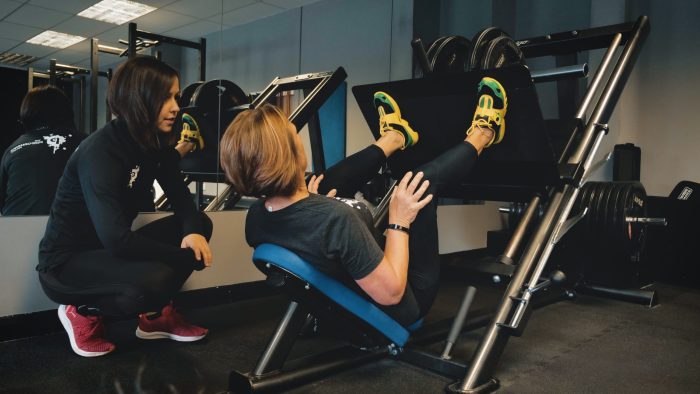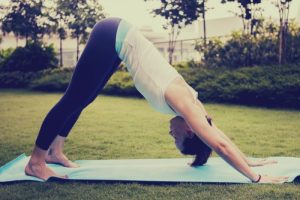
Starting with How to incorporate bone density exercises into daily routines, this paragraph aims to grab the readers’ attention and provide an interesting overview of the topic. Incorporating bone density exercises into daily routines is essential for maintaining overall health and preventing conditions like osteoporosis.
By following simple yet effective exercises, you can improve bone health, reduce the risk of fractures, and enhance your overall well-being. Let’s delve into the world of bone density exercises and discover how you can seamlessly integrate them into your daily life.
Importance of Bone Density Exercises
Regularly incorporating bone density exercises into your daily routines is crucial for maintaining overall health and well-being. These exercises are specifically designed to strengthen your bones, which is essential for preventing conditions like osteoporosis and reducing the risk of fractures.
Prevention of Osteoporosis and Fractures
Bone density exercises help in increasing bone mass and density, making your bones stronger and less prone to fractures. As we age, our bone density naturally decreases, leading to conditions like osteoporosis, where bones become weak and brittle. By engaging in regular bone density exercises, you can slow down this process and maintain healthy bone density levels.
- Weight-bearing exercises such as walking, jogging, dancing, and stair climbing are excellent choices for improving bone density.
- Strength training exercises using resistance bands, dumbbells, or bodyweight exercises like squats, lunges, and push-ups can also help strengthen bones.
- Balance and coordination exercises like yoga, tai chi, and Pilates can improve stability and reduce the risk of falls that may result in fractures.
Types of Bone Density Exercises
Weight-bearing, resistance, and flexibility exercises are crucial for improving bone health and density. Each type of exercise plays a unique role in enhancing bone strength and reducing the risk of osteoporosis.
Weight-Bearing Exercises
Weight-bearing exercises involve activities where your bones and muscles work against gravity. Examples include walking, jogging, dancing, and stair climbing. These exercises help stimulate bone-forming cells, leading to increased bone density and overall bone strength.
Resistance Exercises
Resistance exercises, such as lifting weights or using resistance bands, help build muscle strength and increase bone density. By creating resistance against your muscles, these exercises put stress on your bones, prompting them to adapt and become stronger over time.
Flexibility Exercises
Flexibility exercises, like yoga or Pilates, focus on improving joint mobility and muscle flexibility. While not directly impacting bone density, these exercises are essential for maintaining overall bone health by enhancing balance, coordination, and reducing the risk of falls that can lead to fractures.By incorporating a combination of weight-bearing, resistance, and flexibility exercises into your routine, you can create a well-rounded approach to improve bone density and overall bone health.
Remember to consult with a healthcare professional or a certified trainer to develop a safe and effective exercise plan tailored to your individual needs.
Incorporating Bone Density Exercises into Daily Routine

Regularly including bone density exercises in your daily routine is crucial for maintaining strong and healthy bones. Here are some practical strategies to help you incorporate these exercises into your busy schedule and make them enjoyable for the long term.
Fitting Bone Density Exercises into a Busy Schedule
- Choose activities that can be easily integrated into your daily routine, such as taking the stairs instead of the elevator or doing squats while brushing your teeth.
- Schedule specific times for bone density exercises, just like you would for any other important task, to ensure they don’t get overlooked.
- Combine workouts with other activities you enjoy, like listening to music or watching TV, to make the exercises more engaging.
Optimal Frequency and Duration of Bone Density Exercises
- Experts recommend doing weight-bearing and resistance exercises for bone health at least 3-4 times a week for about 30 minutes each session.
- Include a variety of exercises that target different muscle groups and bone areas to maximize the benefits for overall bone density.
- Listen to your body and adjust the intensity and duration of exercises based on your fitness level and any existing health conditions.
Making Bone Density Exercises Enjoyable and Sustainable
- Find a workout buddy or join a group class to stay motivated and accountable for your exercise routine.
- Reward yourself after completing your bone density exercises with something you enjoy, like a healthy snack or a relaxing bath, to reinforce the habit.
- Experiment with different types of activities, such as dancing, hiking, or yoga, to keep your workouts interesting and prevent boredom.
Monitoring Progress and Adjusting Exercises
Tracking progress when incorporating bone density exercises is crucial to ensure that you are on the right track towards improving bone health. By monitoring improvements and making adjustments as needed, you can optimize the effectiveness of your routine and tailor it to your individual needs.
Importance of Tracking Progress
It is essential to monitor improvements in bone density and overall bone health to assess the effectiveness of your exercise routine. Tracking progress allows you to see how your bones are responding to the exercises and whether any adjustments are necessary to achieve optimal results.
How to Monitor Improvements, How to incorporate bone density exercises into daily routines
To monitor improvements in bone density, you can undergo bone density testing, such as a DEXA scan, which measures bone mineral density. Regular testing can help you track changes over time and determine the impact of your exercise routine on bone health.
Adjusting Exercises Based on Progress
Adjusting exercises based on individual needs and progress is key to ensuring continued improvement in bone density. If you notice that certain exercises are not yielding the desired results, you can modify them or incorporate new ones to target different areas and stimulate bone growth effectively.
Benefits of Bone Density Exercises Beyond Bone Health: How To Incorporate Bone Density Exercises Into Daily Routines
Regular bone density exercises offer a wide range of benefits that extend beyond just bone health. These exercises can have a positive impact on various aspects of overall physical wellness, including muscle mass, joint flexibility, strength, posture, balance, coordination, and quality of life.
Improving Muscle Mass, Joint Flexibility, and Overall Strength
Bone density exercises not only help in strengthening bones but also play a crucial role in improving muscle mass, joint flexibility, and overall strength. These exercises typically involve weight-bearing activities and resistance training, which are beneficial for muscle development and enhancing overall physical strength.
By engaging in these exercises, individuals can experience improved muscle tone, flexibility, and endurance, leading to enhanced overall physical performance.
Enhancing Posture, Balance, and Coordination
Engaging in bone density exercises can also have a significant impact on posture, balance, and coordination. These exercises focus on enhancing core strength, stability, and coordination, which are essential components for maintaining good posture and balance. By incorporating exercises that target these areas, individuals can improve their posture, reduce the risk of falls, and enhance overall coordination and balance.
Contributing to Overall Wellness and Quality of Life
Bone density exercises contribute to overall wellness and quality of life by promoting physical fitness, mobility, and independence. These exercises not only help in preventing osteoporosis and fractures but also support overall well-being by improving cardiovascular health, reducing the risk of chronic conditions, and enhancing mental well-being.
By incorporating bone density exercises into daily routines, individuals can experience a significant improvement in their overall quality of life and well-being.
Integrating Bone Density Exercises with Other Wellness Programs
When it comes to overall health and wellness, incorporating bone density exercises into other wellness programs can have a synergistic effect, enhancing the benefits of each component. By combining bone density exercises with programs focused on nutrition, mental health, and stress management, individuals can achieve a holistic approach to well-being.
Nutrition and Bone Density Exercises
Proper nutrition plays a crucial role in supporting bone health and density. When combined with bone density exercises, a diet rich in calcium, vitamin D, and other essential nutrients can help strengthen bones and prevent conditions like osteoporosis.
Mental Health and Bone Density Exercises
Mental health is closely linked to physical health, including bone density. Engaging in bone density exercises can not only improve physical strength but also boost mental well-being by releasing endorphins and reducing stress and anxiety levels.
Stress Management and Bone Density Exercises
Chronic stress can have a negative impact on bone health. Integrating stress management techniques such as meditation, yoga, or deep breathing exercises with bone density exercises can help reduce stress levels and improve overall bone density.
Comprehensive Wellness Plan Example
In a comprehensive wellness plan, an individual may combine regular strength training exercises to improve bone density with a balanced diet rich in calcium and vitamin D, mindfulness practices for stress management, and mental health support through therapy or counseling.
This holistic approach addresses various aspects of well-being to promote optimal health outcomes.
Epilogue
In conclusion, incorporating bone density exercises into your daily routine is a valuable investment in your long-term health. By following the tips and strategies discussed, you can enjoy improved bone health, muscle strength, and overall well-being. Make these exercises a part of your daily regimen and experience the transformative benefits they offer.
Take charge of your health starting today!
Questions and Answers
How often should I do bone density exercises?
It is recommended to perform bone density exercises at least 3-4 times a week for optimal benefits.
Can I do bone density exercises at home without any equipment?
Absolutely! There are plenty of bone density exercises that can be done at home using just your body weight.
Are bone density exercises suitable for all age groups?
Yes, bone density exercises are beneficial for individuals of all ages as they help maintain bone health and strength.






